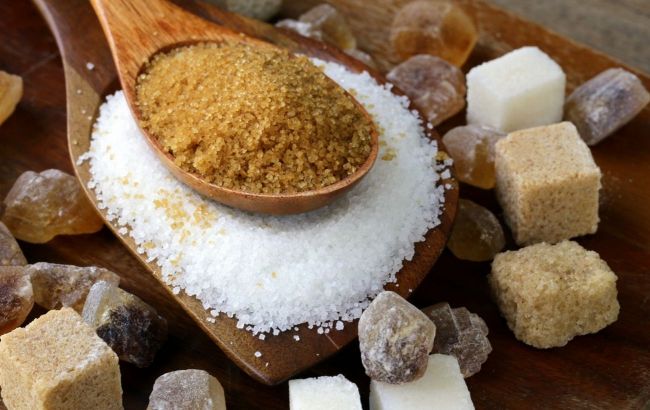White or brown sugar? Nutritionist on best option
 Photo: Which sugar is better (pixabay.com)
Photo: Which sugar is better (pixabay.com)
Sugar is a natural food product that humans have been consuming for thousands of years. But in recent decades, sugar's reputation has been steadily declining. Its consumption is associated with weight gain (linked to a long list of dangerous accompanying diseases), tooth decay, and suboptimal consumption of healthier foods and beverages.
Which is the best sugar option, white or brown, discusses nutritionist Oleh Shvets.
What is the difference between white and brown sugar
White and brown sugar both come from the same crops—either sugar cane or sugar beets—so they are very similar.
Any sugar raw material is first purified to prevent the danger of pathogenic bacteria when consuming sugar. Then, molasses can be added to white sugar to give it a brown color.
Therefore, brown sugar is a mixture of white sugar and molasses (a syrup obtained during sugar production). Molasses gives it a darker color and slightly improves its nutritional value.
The most noticeable difference in nutrition is that brown sugar has slightly higher levels of calcium, iron, and potassium. However, the amount of these minerals in brown sugar is so small that it cannot fulfill the physiological need for these minerals.
Marketers may speculate about brown sugar having fewer calories. But the difference is minimal. One teaspoon (5 grams) of brown sugar contains 15 calories, while the same amount of white sugar contains 16.3 calories.
Technological nuances
Sugar is produced from sugar cane or sugar beets. The methods used to make brown and white sugar differ.
Initially, the sugary juice from both crops is extracted, purified, and heated to create a brown concentrated syrup called molasses. Then, sugar crystals are separated from molasses in a centrifuge. White sugar is further processed to remove any excess molasses and create smaller crystals.
Refined brown sugar is white sugar with molasses added back. Unrefined brown sugar undergoes less processing than white sugar, allowing it to retain some molasses content and its natural brown color. But this can cause understandable safety issues with the product.
Culinary use
Adding white or brown sugar affects the color, taste, or texture of the final product. Molasses in brown sugar retains moisture, so baked goods made with it will be softer but denser. For example, cookies made with brown sugar will be moister and denser, while those made with white sugar will have a lighter texture.
Therefore, white sugar is used for making fluffy pastries, meringues, mousses, and soufflés. Brown sugar is used for dense pastries, such as rich cookies. Brown sugar is also used in glazes and sauces.
The main differences between white and brown sugar are taste and color. Substituting brown sugar for white in recipes will affect the color, giving products a light caramel or brown hue.
Additionally, brown and white sugar have unique flavor profiles. Brown sugar, with added molasses, has a rich caramel or toffee flavor, making it great for chocolate cookies and pastries. On the other hand, white sugar is sweeter and its neutral taste makes it a versatile ingredient for baking, such as fruit sponges.
Which sugar to choose
It depends on personal preferences since taste and color are the main differences. Although brown sugar contains more minerals, their small amount doesn't significantly benefit health.
Sugar is considered a contributing factor to the obesity epidemic and is a leading cause of type 2 diabetes and heart diseases. Excessive sugar consumption is harmful to health. Added sugar should make up no more than 5-10% of daily calories.
Of course, enjoying sweets occasionally is fine, but a healthy diet should limit all types of sugar. When choosing between brown and white sugar, follow your taste preferences as they essentially have similar impacts on health. The significantly higher cost of brown sugar seems unwarranted considering the lack of substantial advantages for the consumer.
This material is for informational purposes only and should not be used for medical diagnosis or self-treatment. Our goal is to provide readers with accurate information about symptoms, causes, and methods of detecting diseases. RBС-Ukraine is not responsible for any diagnoses that readers may make based on materials from the resource. We do not recommend self-treatment and advise consulting a doctor in case of any health concerns.

